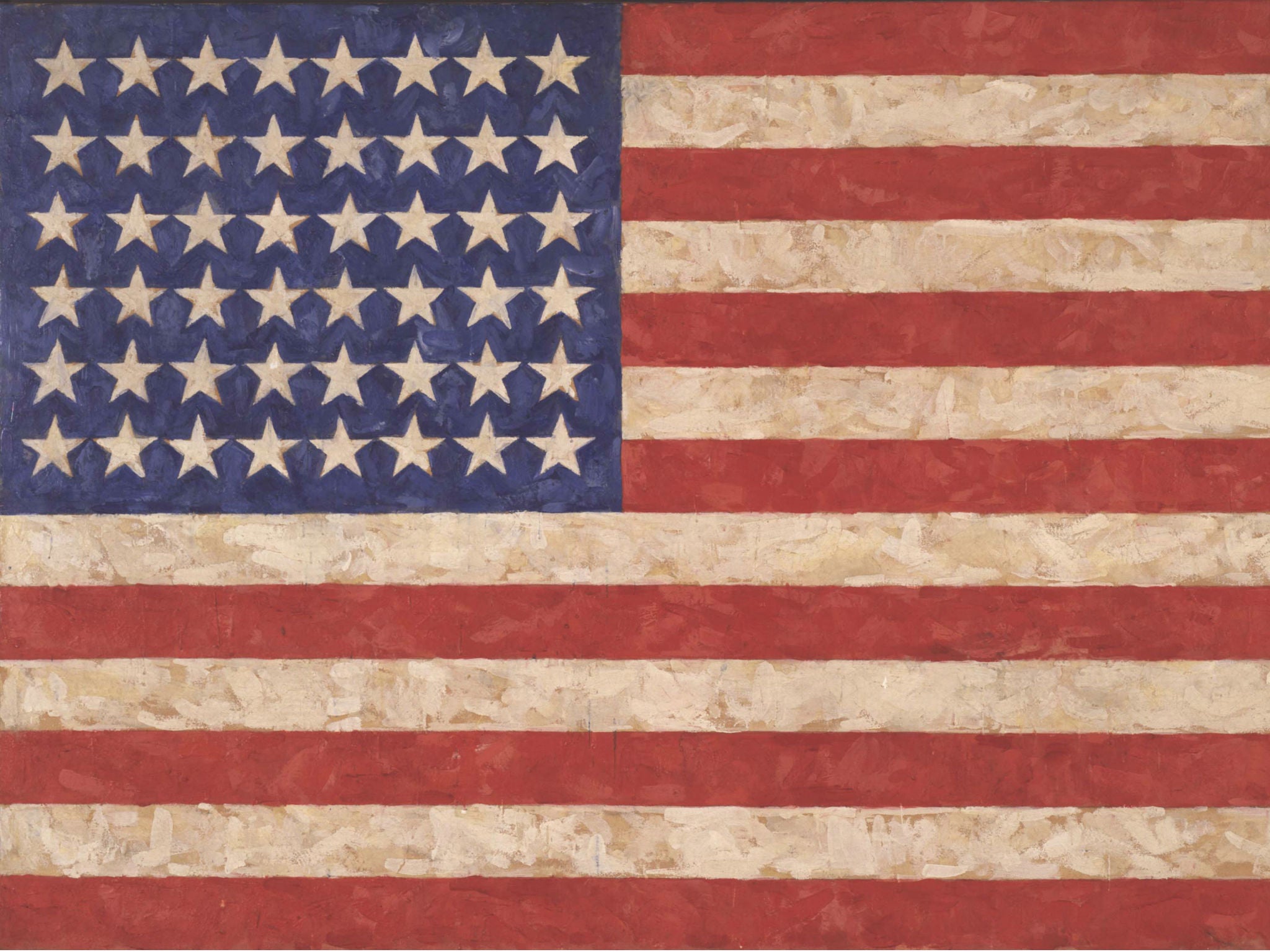Jasper Johns, Something Resembling Truth, Royal Academy, London, review: He draws attention to the extraordinary nature of the ordinary
Known for his images of flags, targets, light bulbs, numerals, and maps, this is first comprehensive survey of the artist’s work to be held in the UK in 40 years

Abstract expressionism hit New York with a great, arms-flung-out-in-all-directions uproariousness in the 1950s. Its noisy rebelliousness seemed the very epitome of the new. Paris was toppled from its pedestal. Paris became passé, even sepulchral. But what came after all the wild gesturings of a Pollock? Something a little quieter, to be sure.
The art of the young Jasper Johns was a much less splashy affair altogether, much more tentative and long-term in its dogged, year-on-year engagement with its themes. Johns had his first solo show at the Leo Castelli Gallery in New York in 1958, and this retrospective at the Royal Academy, organised by theme (with the occasional nod in the direction of chronology), takes us from then until almost now – the last work is dated 2016. Johns’ concern has been to look hard at everything that we take for granted – including the nature of what we choose to call a painting. What kind of thing is this that you are looking at? he is always inviting us to ask. The objects sometimes feel so self-conscious that they might even be inclined to blush.
He paints objects that we think we know – flags, targets, light bulbs, numerals, maps – because familiarity breeds indifference, and John’s enterprise is to shake us out of that indifference, to cleanse us of that jaded way of looking. What exactly is it to know a thing, to wrest meaning and significance from an everyday object? How do you pass from inert contemplation to awe-struck regard? What is it that raises up an everyday object until it is transformed into a symbol that binds us and unites us – such as the American flag? He draws attention to the extraordinary nature of the ordinary by remaking and reimagining, over and over, down the years.
His most favoured medium is encaustic, with elements of collage. With encaustic you can build up a tacky, almost waxy thickness of surface that practically hums. The effect is uncanny – we are looking at painted simulacra of objects that we think we know, but they are not quite present to us in the way that a single example of that same object would be present. They seem, even as we gaze, to float free of themselves, to set themselves above and apart from the very idea they have been created to evoke.
All very serious? Yes and no. Johns has humour too. He scours his studio for the props of his making process – paint cans, brushes, soldering wire, a kitchen knife – and then he attaches them to the canvas, building out the surface until two things happen: the painting edges in the direction of finality of sculpture even as it seems to be reminding us that this object we are contemplating will forever be in the making. He uses words – a word as laconic as NO – to interrupt what the brush is doing – the word hangs free of the painted surface – as if to crack a joke at the expense of the contemplative silence of the two-dimensional object. Jasper Johns is the wiliest of old tricksters.
Subscribe to Independent Premium to bookmark this article
Want to bookmark your favourite articles and stories to read or reference later? Start your Independent Premium subscription today.

Join our commenting forum
Join thought-provoking conversations, follow other Independent readers and see their replies